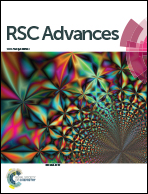FeS2-sensitized ZnO/ZnS nanorod arrays for the photoanodes of quantum-dot-sensitized solar cells
Abstract
FeS2-sensitized ZnO/ZnS nanorod arrays were fabricated and used as the photoanodes for quantum-dot-sensitized solar cells (QDSSCs). The cell performance of the ZnO/ZnS nanorod arrays after sensitization was better than that of ZnO-based nanorod arrays without sensitizing treatment. Pyrite FeS2 was found to be an effective photosensitizer for QDSSCs. Various QDSSCs were assembled using different counter electrodes, such as Pt, FeS2 nanorods and FeS2 nanoparticles, and comparisons of cell performance as well as catalytic activity were made among them.


 Please wait while we load your content...
Please wait while we load your content...